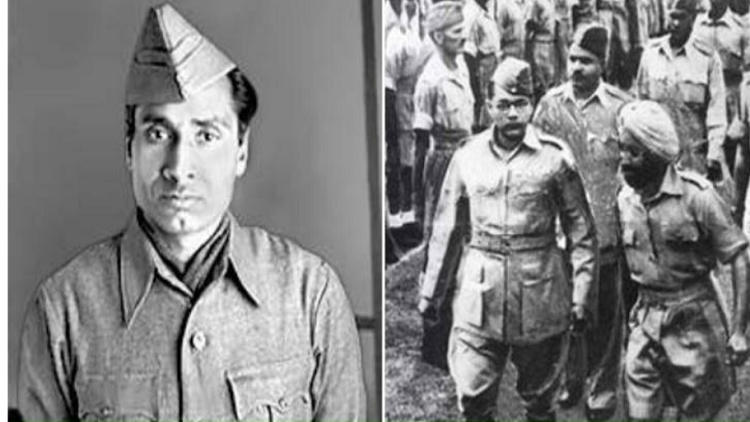
When India, the modern nation State, turned 25 in 1972, there was a sense of jubiliation all over the country. We had just emerged triumphant from a tricky neighbourhood situation that led to a humiliating defeat of Pakistan and the creation of Bangladesh.
The State governments were entrusted with the responsibility of collecting the records of all the freedom fighters in order to felicitate them with a plaque.
One of the veterans to be honoured was Lt. Col Gurbaksh Singh Dhillon, of the Indian National Army led by Netaji Subhash Chandra Bose. History remembers Dhillon as one of the three INA offiers who had to face trial for treason in April 1945. The trial of INA soldiers Dhillon, Maj General Shahnawaz Khan and Col Prem Sahgal and seven oters was called the 'Red Fort Army trials' had united Indians in protest against the English. As slogans like, “Lal quile se aayi awaz; Sahgal-Dhillon-Shahnawaz. Teenon Ki Umr Ho Daraaz (The sound coming from the Lal Red Fort says -Dhillion, Sehgal, Shahnawaz; May the three live long)."
As Dhillon had settled in Gwalior, Madhya Pradesh, the State government approached him for the reward. Showing lack of sensitivity, the officials approaching him to prove and confirm his identity. He was sent a letter asking him to furnish proof of his record as a fredom fighter.
The memory of that day is still fresh in the mind of Amrita, daughter of General Dhillon. Speaking at a function on the birth anniversary of General Dhillion on February 6, 2010, Amrita recalled the moment her father read the letter. She said, “Around 1972-73, a letter from the office of the Chief Minister was delivered at home. Addressed to my father, it said the government has decided to confer a commemoration plaque to freedom fighters like you. You have to prove that you participated in the freedom struggle.”
Amrita said her father was very sad after reading the letter. “He came to me and said see, they have sent me this letter and I am expected to reply.”
Next Amrita saw her father scribbling on paper and then throwing it as a ball. She enquired from him about the contents of his writing. Gen Dhillon finally told her, “I am replying to the Chief Minister through a poem.”
Finally, when the poem was ready, he sent the letter to the CM, PC Sethi.
The poem read:
Kabhi mein bhi thaa desh ka ek sipahi
Quila Lal Delhi ka dega gawahi
Hamari thee talwar kee dhar kaisi
Woh jawanon key neta kee lalkaar kaisi
Woh bade ranjam kei to thee yalgaar kaisi
Jai Hind key naron kee jaikaar kaisee
Tha farma e neta chalo Dehli
Tum mujhe khoon do mein donga tumhe Delhi
Wahin jahan aaj Indira hai Rani
Kari jisney the Bangal ki banbani
Nahin aaj angrez gaddi key upar
Hamarey hee leader hamarey hee sar par
Magar khudparasti ke chakkar mein aakar
Hamhin se hamari razza mangtey hein
Ajab kamsani hai yeh kya mangtein hein
Dimagi ghulami nahin hai gawara
Nahin sir jhukana kabhi sir ko pyara
Mera desh hai mein yeh kehta jabhi hoon
Mera desh hai mein yahan ajnabi hoon
Mein bhi thaa kabhi desh ka sipahi
Woh jo ladey watan ke liye
Do gaz zamin na ho dafan ke liye
Mera desh hai mein yeh kehta jabhi hoon
He ended the letter with the following:
“You have asked for my identity and consent. If the nation wants confirmation of my identity, I don’t need the plaque.”
Realising their mistake, the then commissioner of the area delivered the commerative plaque to Dhillon at his house and also apologised to him.
